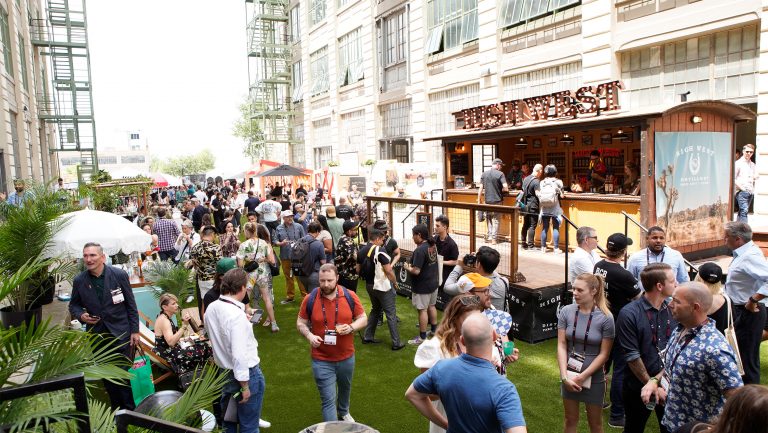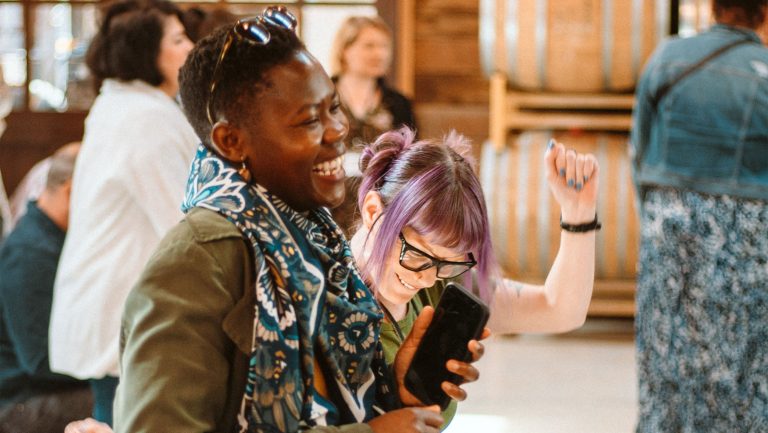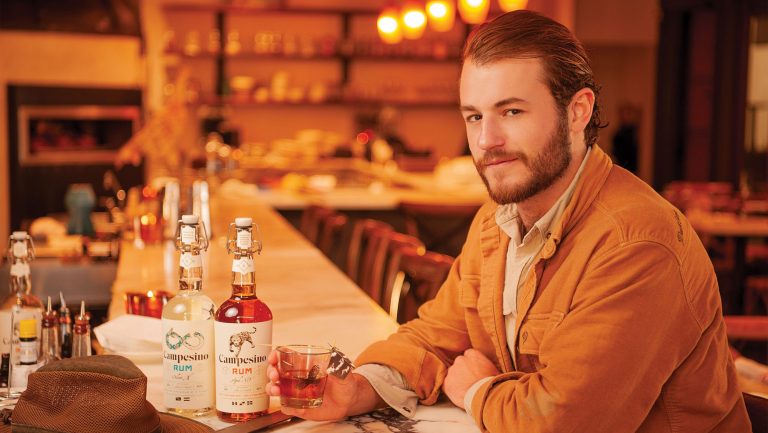Though attendees at the Food & Wine Classic, held from June 13 to 16 in Aspen, Colorado, were tempted with opportunities to experience world-renowned food and wine throughout the four days, many instead took some time to partake in a serious and important conversation about inclusivity in the restaurant industry. As part of the American Express Restaurant Trade Program, a panel titled Hospitality’s Moment to Lead was held in the afternoon of the classic’s second day, centered on the subject of how the hospitality industry can be a driving force for equality and diversity in restaurants.
Moderated by Kat Kinsman, a senior editor at Food & Wine, the panel consisted of an impressive group of chefs and restaurant owners who are working to promote positive change at their businesses: Nina Compton, the chef and owner of Compère Lapin and Bywater American Bistro in New Orleans; Cheetie Kumar, the chef and owner of Garland, Neptunes Parlour, and Kings in Raleigh, North Carolina; Marcus Samuelsson, the chef and owner of Marcus Samuelsson Group, based in New York City; and Traci Des Jardins, the chef and owner of Mijita Cocina Mexicana and a partner in The Commissary, Arguello, Transit, Public House, and School Night restaurants, all in San Francisco.
Finding Motivation
Kinsman kicked off the discussion by asking each of the panelists what inspired him or her to proactively create safe spaces where diversity of opinions and ethnic backgrounds can thrive. For Compton, the approach was a way to pay back the warm welcome that New Orleans gave her “as a newbie.” Kumar was inspired by the way her Raleigh music venue Kings welcomed bands by sharing a meal together. Getting to know the people coming to the venue “was important to us,” she said, “and by extension, it was a natural thing to treat our staff the same way.”

Don’t miss the latest drinks industry news and insights. Sign up for our award-winning newsletters and get insider intel, resources, and trends delivered to your inbox every week.
Samuelsson said his entrée into Harlem with Red Rooster was like learning a whole new language. “I didn’t know that food poverty was linked to Jim Crow,” he admitted. “I had to learn that. I threw out everything I learned in midtown Manhattan and [decided] to hire people who had spent time in jail, for instance.” He quickly realized that to succeed in the way he wanted to, Red Rooster would need to be a supportive and welcoming environment for both staff and guests.
Des Jardins always seeks to make her restaurants inviting for a diverse group of people. “Like Marcus, I had a Michelin-star background,” she said, “and I had to think hard about balancing my kitchen—we had to work at creating an environment where a more diverse group of people could thrive. I had always worked with white men. But we knew we had to make a space for different cultures and to acknowledge different backgrounds so that we would not perpetuate the mistakes of the past.”
Creating an Inclusive Environment Daily
There are many different ways to create a more inclusive environment from day to day—a place where staff can learn while feeling protected and supported. Compton, who actively seeks out diverse backgrounds, encourages an “open forum to express any emotions,” which helps make people want to come to work every day. She recalled hiring a woman who had worked in construction, with no food background, simply because “we jibed,” and she wanted to give her a chance.
“The word restaurant means to ‘restore’ a community,” Samuelsson pointed out. He intentionally created a large open kitchen so that guests and staff could see one another. “That creates aspiration on both sides,” he said. Kumar realized that no matter what backgrounds employees came from, everyone in her restaurant shared one common language: food. “I always ask our cooks what their family life was like growing up and how they started cooking,” she said. “When I know the answers, we can go from there.”
Overcoming Language and Cultural Barriers
“Language and communication are pivotal,” said Des Jardins. “We have a tremendous Hispanic population in San Francisco.” If they didn’t speak English, she said, “they weren’t comfortable moving into larger roles.” To work toward a solution, she started an English language program and invited employees to come to her with everyday concerns, like problems with a landlord. “Language is the barrier, I realized,” she said, so she set out to remove the barrier.
Des Jardins also started La Cocina, a nonprofit organization dedicated to supporting the local community by empowering and cultivating low-income food entrepreneurs—particularly immigrant women—and by offering business resources to help them formalize their dreams. In June, La Cocina published a cookbook from those in the business incubator: We Are La Cocina: Recipes in Pursuit of the American Dream.
While chefs and owners can work to resolve differences among the staff, they have no control over who comes to a restaurant or what kind of baggage they bring with them. “How do you work with your staff to help people of all diverse backgrounds feel comfortable?” asked Kinsman. “How do you protect your workers?”
In New Orleans, Compton deals with a rowdy tourist population who often feel they have a license to act out. “If someone is getting out of control,” she said, “our managers have permission to ask them to leave.” Des Jardins said that to make her staff members feel fully supported, she has a zero-tolerance policy for guests who make inappropriate comments to them. Kinsman pointed out that Compton’s husband and business partner, Larry Miller, will level the public playing field and make the conversation two-sided by “sharing pictures of bad Yelp reviews online and telling the reviewers what they actually did” that was offensive, giving voice to the restaurant’s side of the story. This drew resounding applause from the audience.
Addressing Gender Dynamics and Political Issues
When it comes to gender dynamics, Des Jardins feels it’s up to the restaurant owner to set the tone and to have conversations with management so that there’s an understanding of how to address these issues. “When [they] don’t understand these sensitivities,” she said, “you need to teach your staff and give them the language to use to make it an equal playing field for everyone.” Kinsman then added, “It’s such an easy thing to cure. Like when you say ‘Hello,’ you don’t have to make a hello gendered.”
Kinsman also noted that restaurants are increasingly confronting politics, particularly when it comes to women’s issues, and she asked the panelists how they address politics in the workplace. “It’s a slippery slope,” said Compton, “and you can’t please everybody. Sometimes there are repercussions, but you have to stand for what you believe in.”
Des Jardins recalled the backlash against her after she commented in interviews that she wouldn’t work in the White House during a Republican administration. “I didn’t say I wouldn’t serve Republicans, but I got a lot of flack,” she said. But Des Jardins feels it is vital to voice opinions on major issues that impact the community, especially if those topics bring up opposing viewpoints among her staff. “Like with women’s right to choose,” she said, “how can you not make a statement about that? It’s scary though, and you may be turning off a lot of guests.”
“It’s either you shut up and cook or you cook out loud!” said Kumar—again to resounding applause.
But if change is going to happen, allowing for equality and diversity to flourish together in restaurants, chefs and owners the world over have to ask themselves a hard question: Am I doing the hard work to have a diverse population in my restaurant? “And if the answer is no,” said Des Jardins, “you have to fix it, because it will not fix itself.”

Dispatch
Sign up for our award-winning newsletter
Don’t miss the latest drinks industry news and insights—delivered to your inbox every week.
Jonathan Cristaldi has written about wine for Food & Wine, Los Angeles Magazine, Liquor.com, First We Feast, Thrillist, Time Out LA, and Psychology Today. He was previously the editor in chief of Wine Access and is currently a contributing editor to The SOMM Journal. A witty, avant-garde educator, he was named a Wine Prophet by Time Out NY. Follow him on Instagram @jcristaldi.







